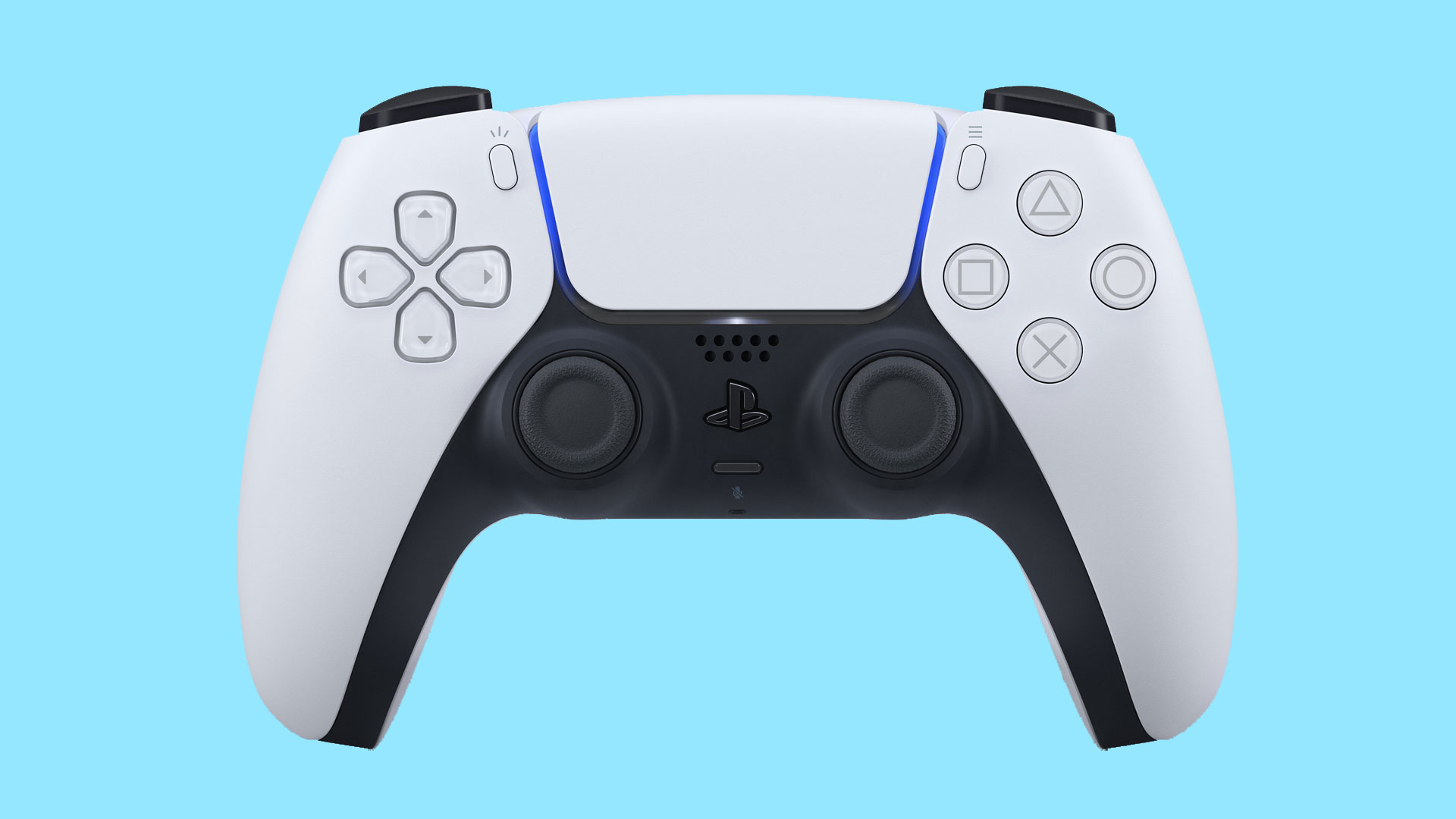
The PlayStation controller is among the most iconic designs in the video game industry. From its earliest introduction back in 1994, the incredible iterations of the DualShock controller, to the future of PlayStation with the PS5 controller DualSense, this gamepad has connected millions of players to some of the very best gaming experiences the industry has to offer for over two decades. Sony has stuck with a winning formula pretty consistently, with just about every iteration reflecting the distinctive handlebar shape and the iconic face buttons. However, a desire to deliver a controller that brings players into virtual games in new and innovative ways has ensured that the controller has evolved in some interesting ways between console generations. That's why we have tracked the history of the PlayStation controller, from original release alongside the PlayStation to the DualSense PS5 Controller.
PlayStation Digital Controller (PS1, 1994)
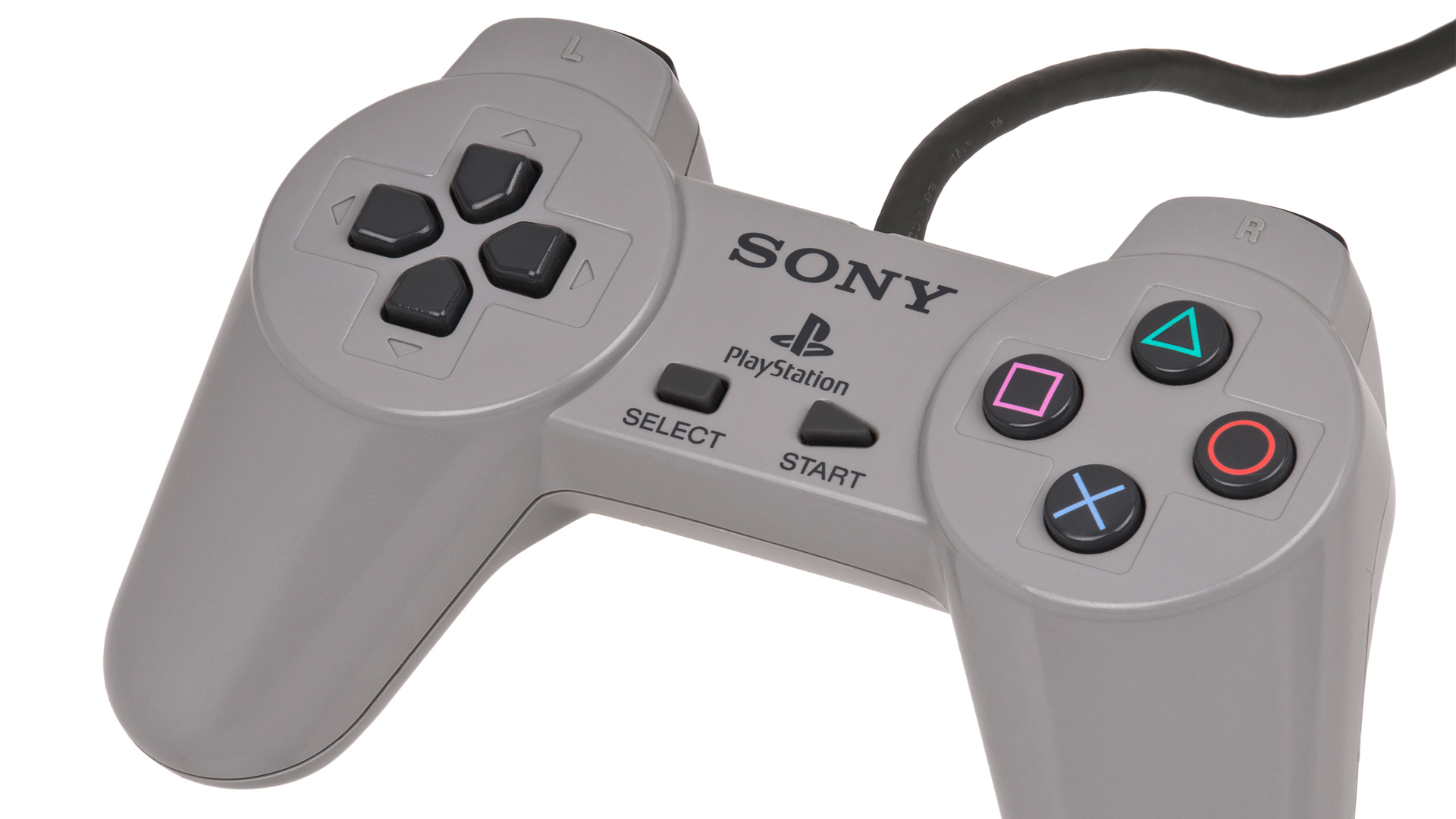
It's one of the most iconic controllers ever committed to production. The 'Digital' controller, as it was known at the time, was the gamepad Sony used to launch the PlayStation brand back in 1994. Released alongside the PlayStation, you can still see echoes of Sony Computer Entertainment's Teiyu Goto's original design in the pad as it exists today. With its distinct shape and iconic Triangle, Circle, Cross, and Square buttons, the gamepad is as much a reflection of the PlayStation brand as Kratos or Nathan Drake. Of course, its d-pad and reliance on four primary face buttons is indicative of the era, and similar in scope to the SNES controller (no surprise, given that the PlayStation started life as a prototype SNES CD-ROM expansion), and it has certainly stood the test of time. The Digital Controller ran from 1994 through to 1997, with only minor alterations made along the way, although it was discontinued towards the end of the console's lifecycle to make way for the first major iteration on its design.
PlayStation Dual Analog Controller (PS1, 1997)

As the scope of PlayStation's games library continued to grow, so too did the ambition of Sony's engineers. Released in early 1997, the Dual Analog controller was an experiment of sorts – the first official handheld analog controller for the PlayStation – that arrived as Sony attempted to introduce new ways to play. The addition of two analogue sticks to the pad was designed to give players more freedom over movement, the camera, and control as developers started to explore the realms of 3D game design. The 'Analog' button beneath the Start and Select buttons would toggle the controller's 'Flightstick' functionality on and off, should a game support the improved directional input it offered. Its larger shape and longer shoulder buttons would be returning form factors, and it wouldn't be long before games outside of MechWarrior 2 and Colony Wars – two games among a select few that supported thumbstick control at launch – would support the new setup. Of course, the Dual Analog controller's life was short lived as yet another evolution appeared on the near horizon.
DualShock (PS1, 1997)
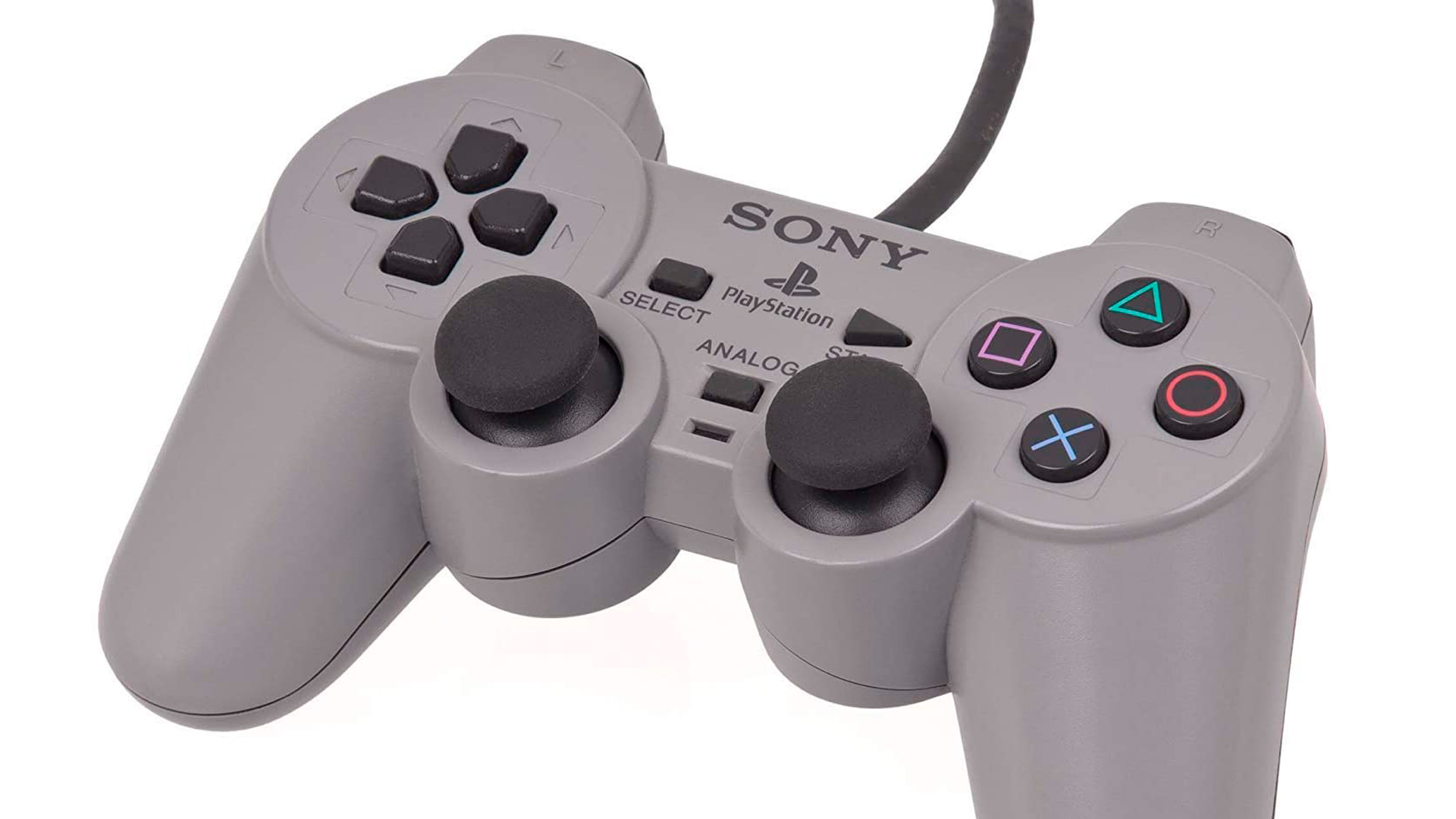
Technically speaking, the DualShock wasn't the first of Sony's controllers to bring rumble support to PlayStation. A variant of the DualShock's predecessor, the Dual Analog Controller, that was exclusive to Japanese territories actually came equipped with vibration support, although its notorious unreliability and Sony Computer Entertainment's inability to ship an affordable counterpart worldwide meant that it was a short-lived part of history. Enter, The DualShock controller at the tail end of 1997. Twin sticks with more comfortable rubber tips, dual rumble engines (hence the name) to deliver astounding haptic feedback, and an overall tighter design ensured that the DualShock wasn't an optional peripheral – it was a necessary piece of equipment to play. Ape Escape and Metal Gear Solid were two of the early proprietors of this new technology, laying the groundwork for a shift in the way that studios approached game design and rumble support.
DualShock 2 (PS2, 2000)
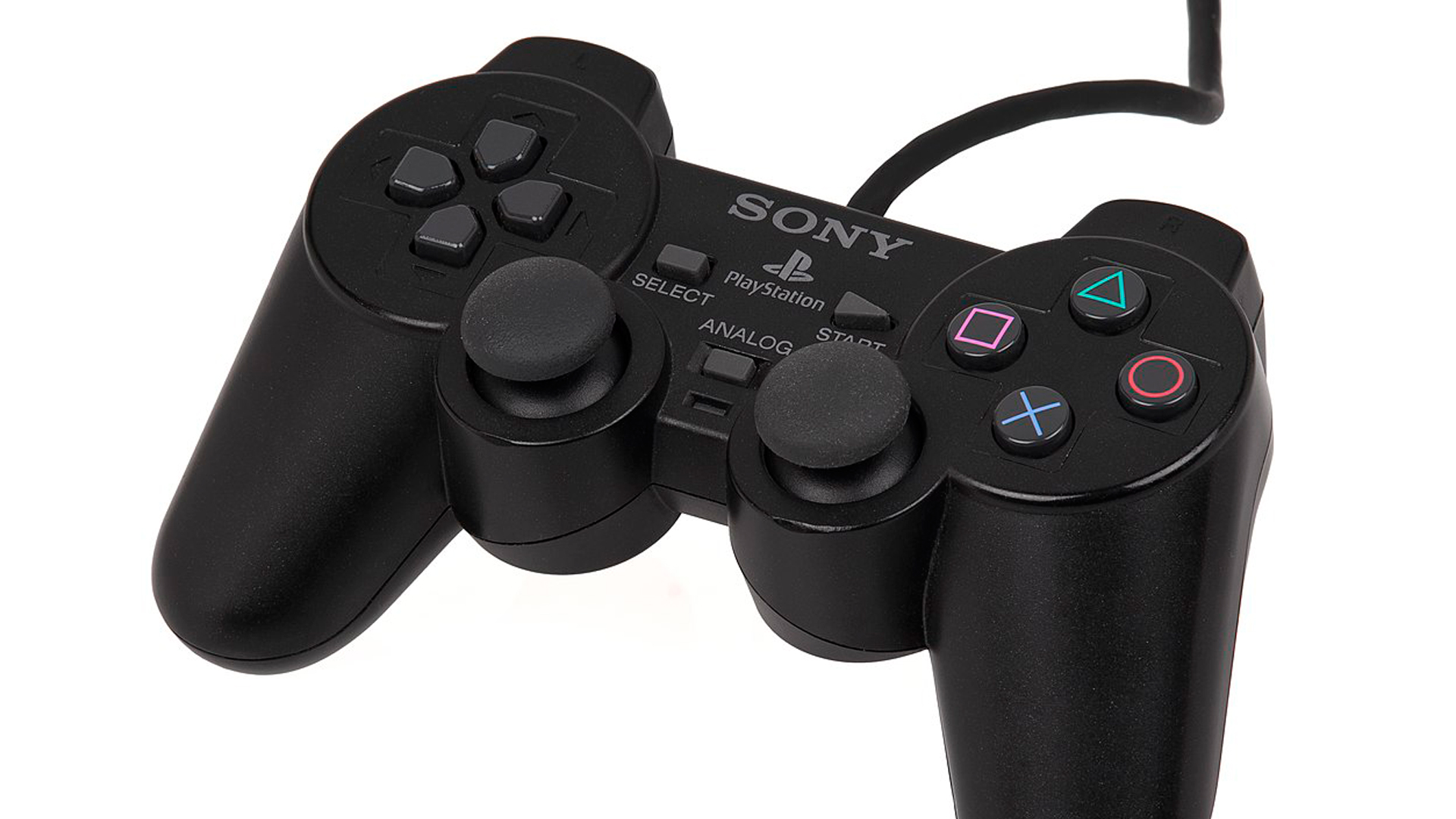
The PlayStation 2 is the best-selling video game console of all time, so there's a pretty good chance that you'll be familiar with the DualShock 2. The controller came packaged with the new system back in 2000 and immediately defined play for an entire generation of players. While it is essentially identical to the original DualShock, albeit a little lighter, it did come with a jet black coat of paint (setting a standard for Sony moving forward). Oh, and the DualShock 2 also featured analog sticks with better range of motion than its predecessor, as well as pressure-sensitive face and shoulder buttons to allow for more nuanced inputs. It meant that developers were able to immerse players into their games in ways they had never experienced before – applying more pressure to different face and shoulder buttons to get different results is, after all, still a staple of gaming today.
The Boomerang (PS3, N/A)
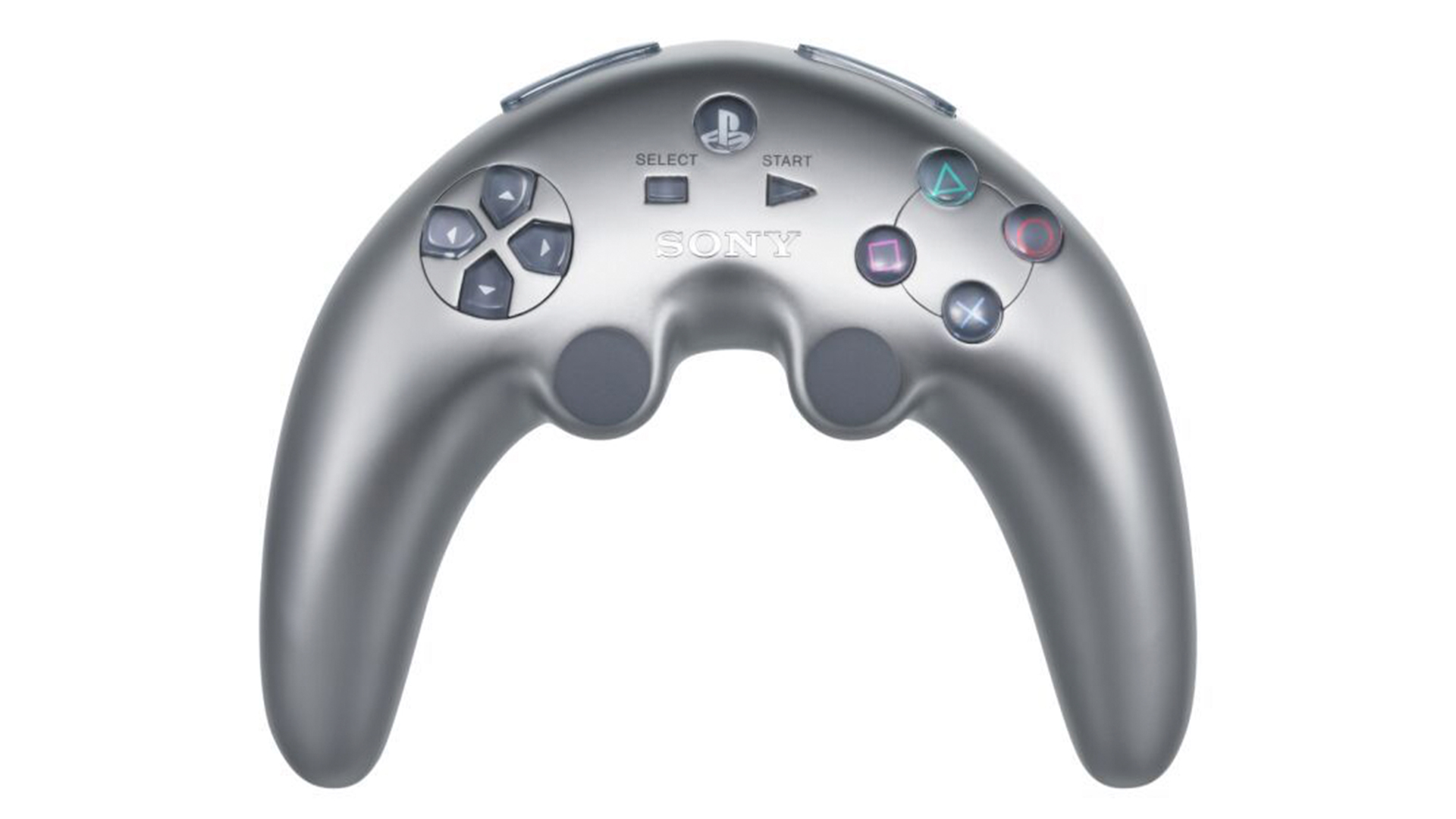
Honestly, I still remember the moment Sony whipped the Boomerang out at E3 2005. The company was in the middle of selling the benefits of the PlayStation 3 – this wildly ambitious all-in-one entertainment device that would dominate the war for Input One. While we should have been focused on the system's incredible specifications, its monstrous size and price, the truly wild amount of connection ports it offered, its backwards compatibility with PS2 games, and the addition of a Blu-Ray player, it was the Boomerang (as it was affectional dubbed by the communities collecting on online message boards writ large) that stole the show. And not, I'd wager, in the way that Sony had hoped. The controller was supposed to be a reflection of PlayStation's new approach to console and game design; the controller was designed to fully explore the entertainment system concept, it even featured a dedicated button allowing players to back out of applications easily to return to the home screen. It was wireless too, a first for a first-party PlayStation controller. This was a forward-thinking peripheral with a visual aesthetic that was widely mocked. It was deemed so distracting to Sony's PS3 messaging that the company never put it to market.
Sixaxis Controller (PS3, 2006)
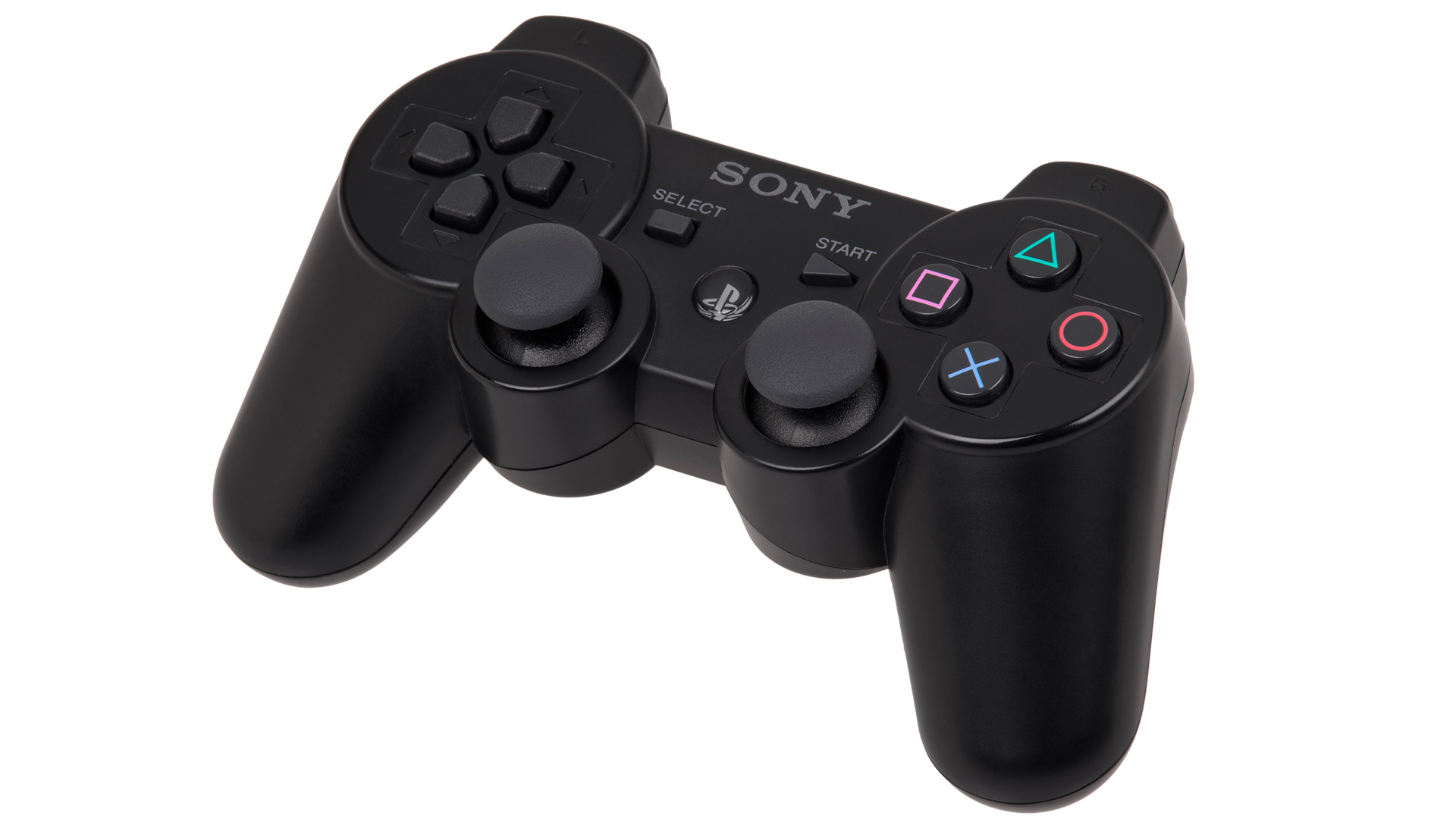
It's difficult to remember now, but the PlayStation 3 actually launched with a controller that didn't feature rumble support. Sony went back to the drawing board after the Boomerang fiasco and came back with what was supposed to be the successor to the DualShock 2. It certainly looked the part, but it didn't have it where it counts. Sony became embroiled in a patent infringement case during the development of the PS3 which precluded the company from launching the system with a controller that supported rumble. The lack of vibration didn't go down well with large swaths of the audience, although the Sixaxis' lightweight design, motion-control functionality, and its introduction of Bluetooth wireless connectivity to PlayStation consoles went some way to quelling the discontent. On reflection, it was really only the early adopters that felt the pain of a rumble-less controller, as Sony had a remedy to the problem available little under a year later.
Sign up to the GamesRadar+ Newsletter
Weekly digests, tales from the communities you love, and more
DualShock 3 (PS3, 2007)
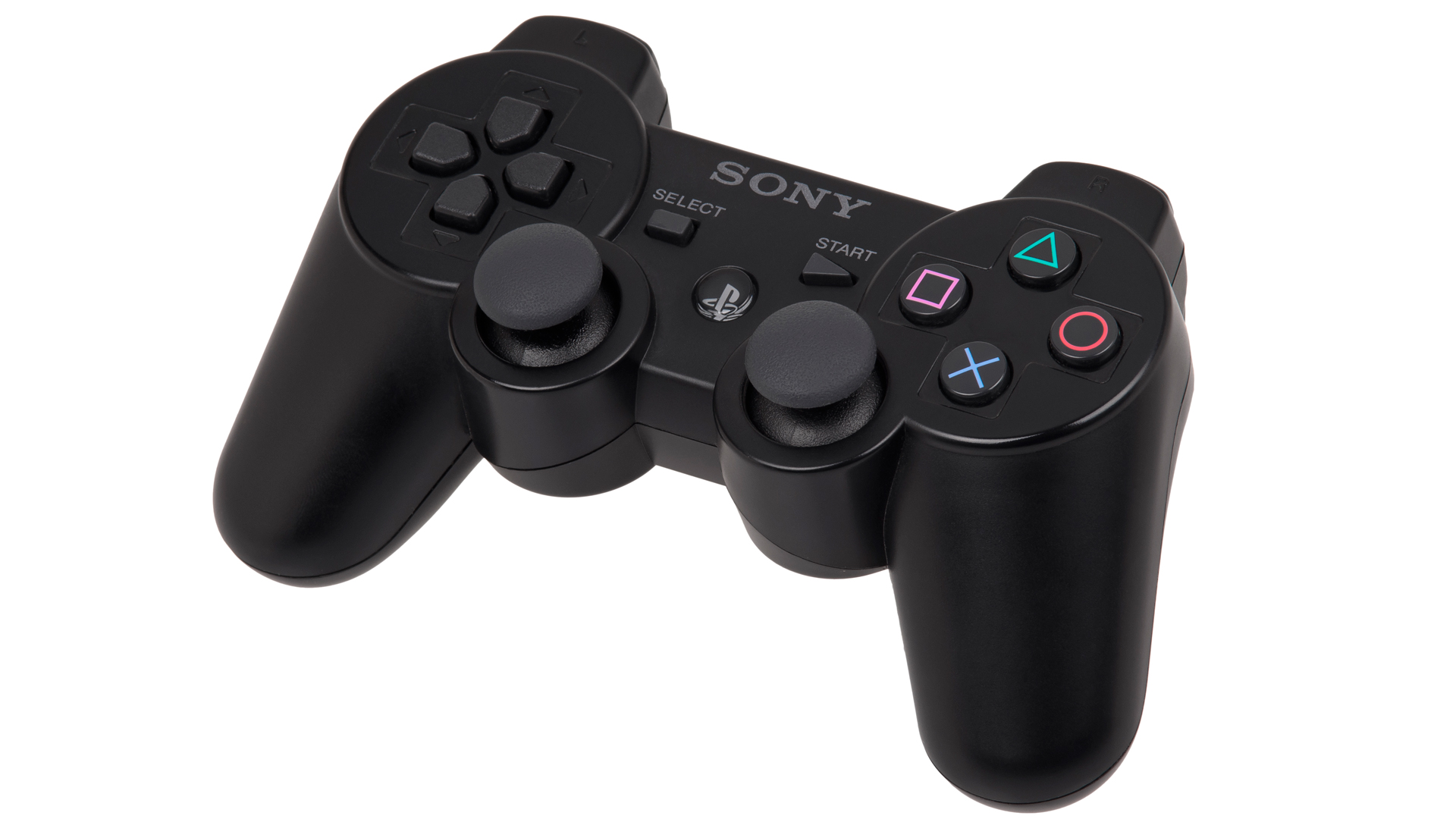
Here it is, the device the PS3 should have launched with. Sony brought the DualShock branding back into rotation in 2007 and, with it, its dual rumble engines. Weightier, punchier, and a smart iteration on an iconic design, the DualShock 3 was what the system needed. It didn't take long for developers to showcase just how important vibration was to play, with Hideo Kojima among the first to make some ingenious use of the tech with its implementation in Metal Gear Solid 4: Guns of the Patriots. The DualShock 3 became the primary way to play all throughout the PS3's lifecycle, with the Sixaxis discontinued entirely in 2008. The DualShock 3 combined the best of both worlds, packing rumble, motion-control support, Bluetooth connectivity, and some minor quality of life changes to the core design.
DualShock 4 (PS4, 2013)

That major revision Sony had been looking to make to the PlayStation controller since the earliest days of the PS3? It finally got its chance a generation later with the PlayStation 4 in 2013. The DualShock 4 is a major and modern revision of the DualShock design. It's sleek and easy on the eyes, and one of the most impressive iterations in the almost two decades since the Digital controller released alongside the original PlayStation. While the DualShock 4 retained the iconic and distinctive shape of its predecessors, it's the addition of the touchpad and light bar that really set this pad apart. Sony was able to pack this controller with the best existing features – such as rumble, motion control, wireless support – alongside the new tech without drastically increasing the weight. The introduction of a dedicated Share button – letting us capture screenshots and video effortlessly – changed the way that we interacted with, and socialled, our gaming highlights, while the Options button managed to pack in the functionality of the Start and Select buttons into a single input. Revisions were made to the shoulder buttons, making them feel more like triggers than ever before, while the improved functionality of the central PS Button ensured that the PS4 felt like it was still at the centre of your home entertainment experience. The DualShock 4 is still among the most impressive and comfortable of Sony's controllers to date.
DualSense (PS5, 2020)
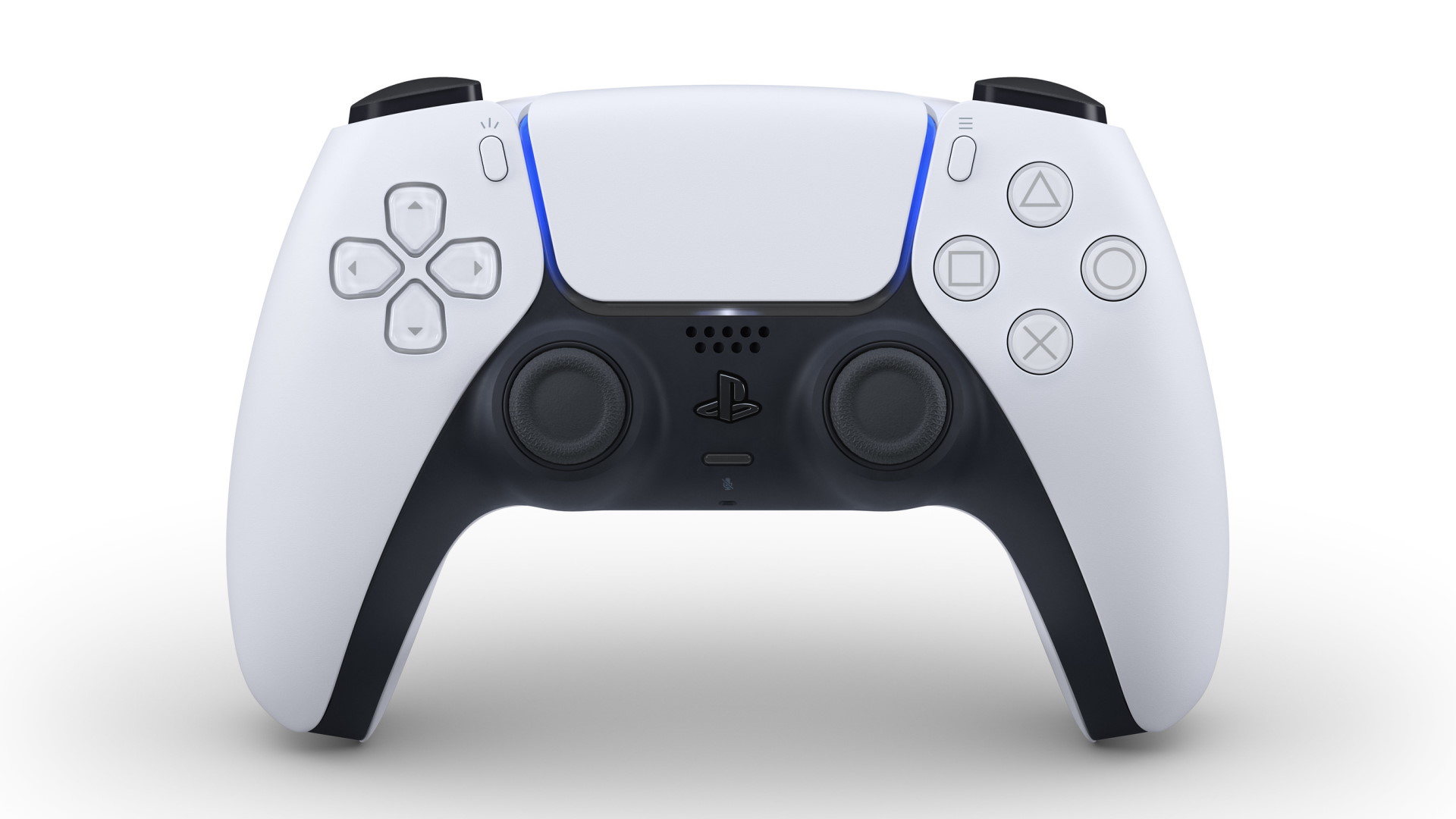
As Sony looks towards the next-generation it has made perhaps the most significant change to PlayStation controller since its ill-fated introduction of the Boomerang. The PS5 controller – DualSense – has echoes of the DualShock design, but it features a chunkier chassis and wider triggers. This is not only to ensure that a wider range of hands can feel at ease with the PS5 controller in their hands, but as a way of packing some brand new technology into the design too. The DualSense features a significant upgrade to the rumble-support of old, with the controller introducing Haptic feedback and Adaptive triggers which will deliver directional vibration straight to your fingertips. While much of the design remains the same, the light bar functionality has moved to straddle the returning touchpad, and the PS5 controller will also feature a built in microphone so that you can talk to friends if you don't have a wired or wireless controller to hand. On top of all of that, the DualSense also sees Sony abandoning the black colour configuration it has adopted as standard across its controller peripherals since the year 2000, opting instead for a polarising two-tone colour aesthetic. While we yet to receive detail on its functionality, Sony has also replaced the Share button with a brand new Create button – the mind can only imagine what Sony has in store for us on that front!
We're still yet to try the DualSense PS5 Controller out for ourselves, but everything we've seen and heard about it so far would indicate that Sony is onto another winner here. Want to know what we all think of it? Then you'll want to read our impressions right here: DualSense: The GamesRadar team reacts to the new PS5 controller.

PS5 DualSense and Xbox Series X controllers are the most important reveals of the next-generation to date: Now that Sony has shown the PS5 controller to the world, I'm ready to invest my excitement in the new consoles.

Josh West is the Editor-in-Chief of GamesRadar+. He has over 15 years experience in online and print journalism, and holds a BA (Hons) in Journalism and Feature Writing. Prior to starting his current position, Josh has served as GR+'s Features Editor and Deputy Editor of games™ magazine, and has freelanced for numerous publications including 3D Artist, Edge magazine, iCreate, Metal Hammer, Play, Retro Gamer, and SFX. Additionally, he has appeared on the BBC and ITV to provide expert comment, written for Scholastic books, edited a book for Hachette, and worked as the Assistant Producer of the Future Games Show. In his spare time, Josh likes to play bass guitar and video games. Years ago, he was in a few movies and TV shows that you've definitely seen but will never be able to spot him in.


